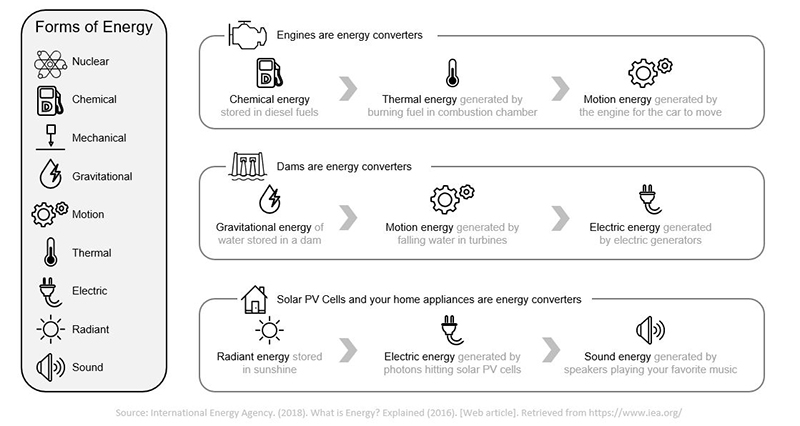Energy IQ: Energy, power and electricity: What's the difference?
Power vs Energy - You can do a simple experiment right now to understand the difference between power and energy.
By Aytek Yuksel, Content Marketing Leader - Power Systems

See How to Raise Your Energy IQ
But before we get too far into the experiment, let's get one thing out of the way: Electricity is simply a form of energy.
Now that we've cleared that up, here's a quick experiment to help you better understand the difference between energy and power.
The experiment...
Raise your right arm above your head slowly. Congratulations! You just consumed about four joules of energy.
Now raise your left arm above your head, but this time do so twice as fast as the first time. Great! You just consumed about the same amount of energy as the first attempt, but you applied twice as much power through a shorter duration since you raised your arm twice as fast.
If we get even more technical, energy is the capacity of doing work and power is the time rate of doing work (or delivering energy, according to Encyclopedia Britannica). To get the same job done repetitively would require the same amount of energy, but you can apply more power if you want to get it done faster.
The difference between energy, power and electricity...
Energy comes into our life in many forms. The first law of thermodynamics states that we can neither create nor destroy energy, but only convert it from one form to another.
For instance, diesel fuel contains chemical energy, and an engine converts the chemical energy to thermal energy through combustion, then thermal energy to motion energy. If you couple the engine with an alternator and form an electric power generator, the alternator converts the motion energy from engine to electricity, another form of energy.

Power is the time rate or pace of doing the work. You would commonly see power conveyed or described in "watts" and energy in "watt-hours." As you apply power (watts), over a time duration (hours), you will figure out how much energy is consumed, in watt-hours.
There are many devices that generate power. A diesel electric generator produces power by converting chemical energy to electricity, a solar panel produces power by converting the energy of sunlight into electricity. These devices generate power, but don’t create energy, just convert energy from one form to another.

Electricity is one of the many forms of energy. The relative ease of transmission and distribution, and the ability to use it more safely makes electricity a popular form of energy for our everyday lives.
We consume electricity by converting it to other forms of energy. Electrical energy can be transformed into various forms. For instance, light bulbs turn electrical energy into light, space heaters into heat, and electric vehicles into motion.
Aside from electricity, we also heavily rely on energy derived from oil, natural gas, and biofuels/waste. Oil is mainly used for transportation, natural gas for residential and industrial needs, and biofuels/waste for heating and cooling in homes."
Got all of that?
In summary, we use energy in many forms throughout our everyday tasks, and electricity is simply one of these many forms of energy that is widely popular. Power on the other hand is the time rate of delivering energy.
To learn more about trends in energy and electricity markets or read stories like this, follow Cummins on Facebook and LinkedIn. You can also learn more about how Cummins is powering a world that’s "Always On."
Think your friends and colleagues would like this content? Share on LinkedIn and Facebook.
Author Profiles

Aytek Yuksel, Content Marketing Leader - Power Systems
Aytek is a marketing leader at Cummins, focusing on technology and thought leadership. Since joining in 2008, he has held various marketing roles and now shares insights on markets, technologies, and energy transition. Aytek lives in Minneapolis with his wife and two kids.